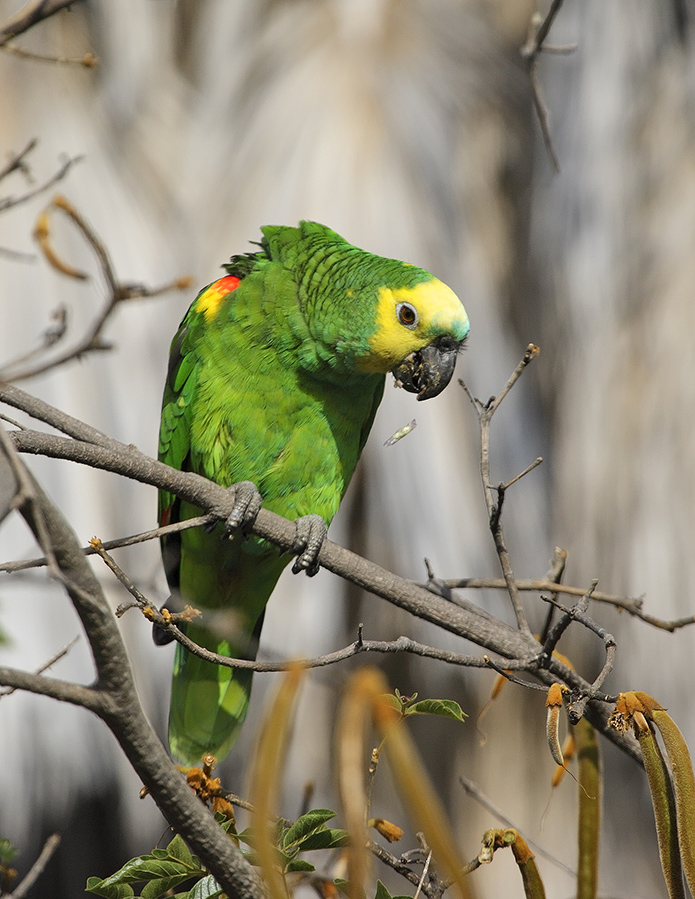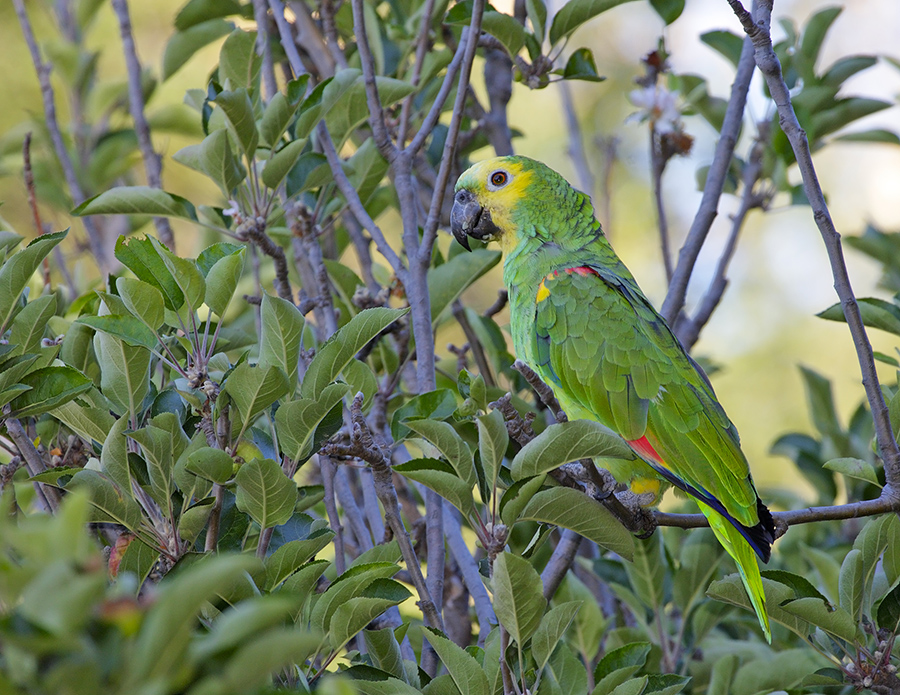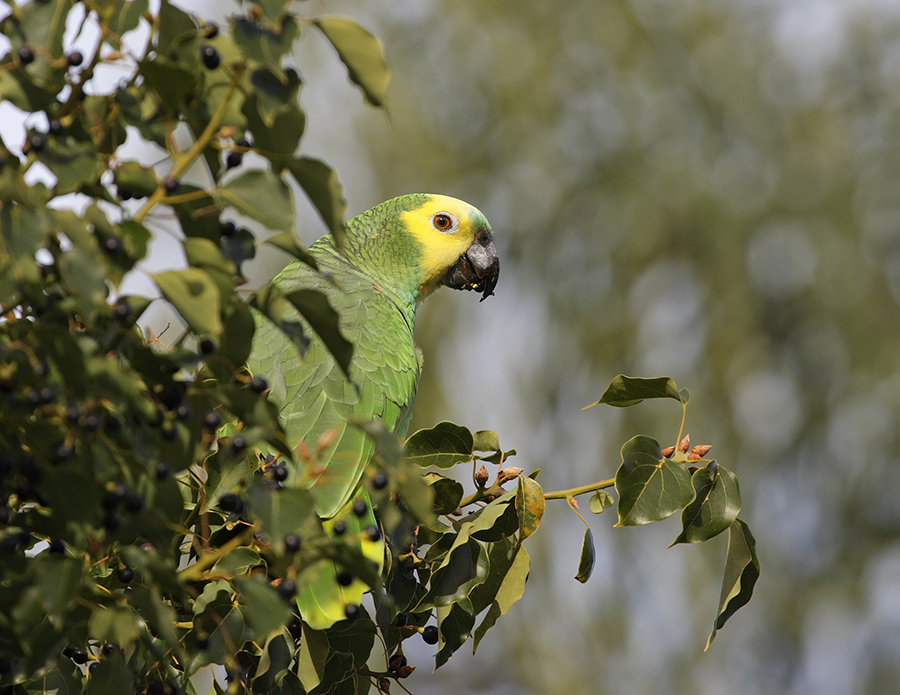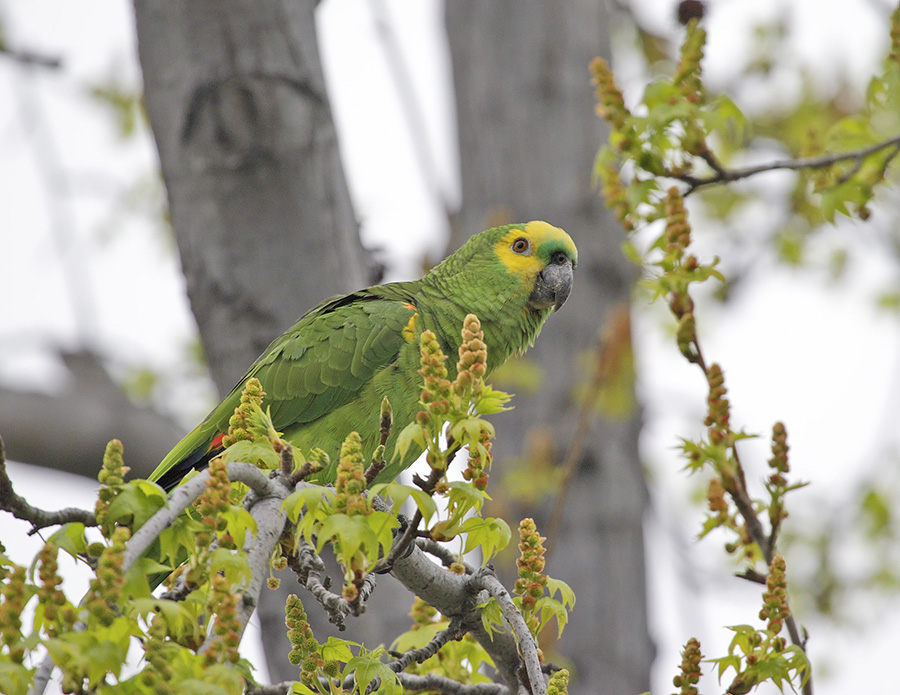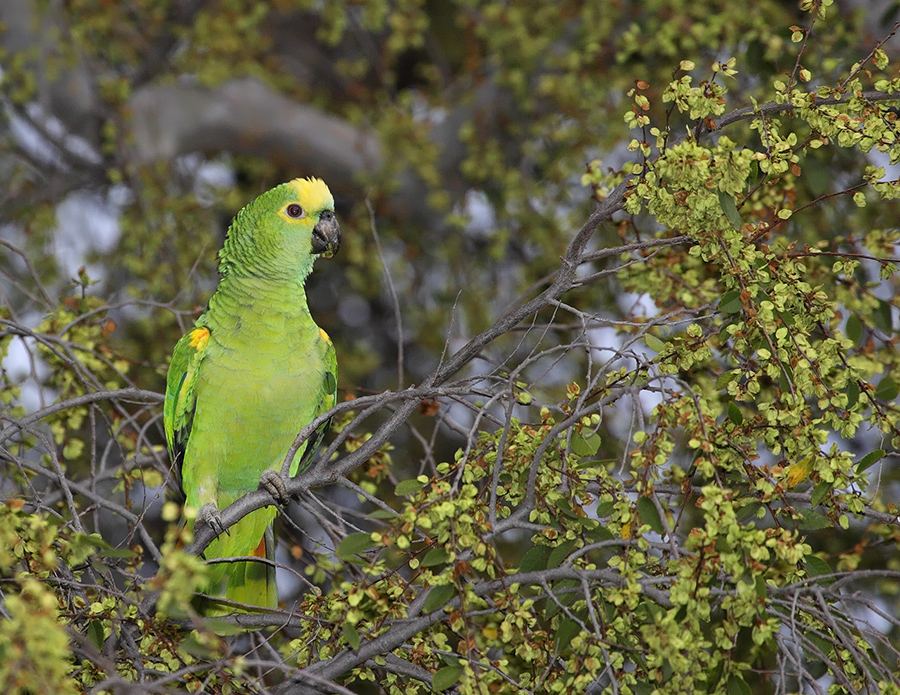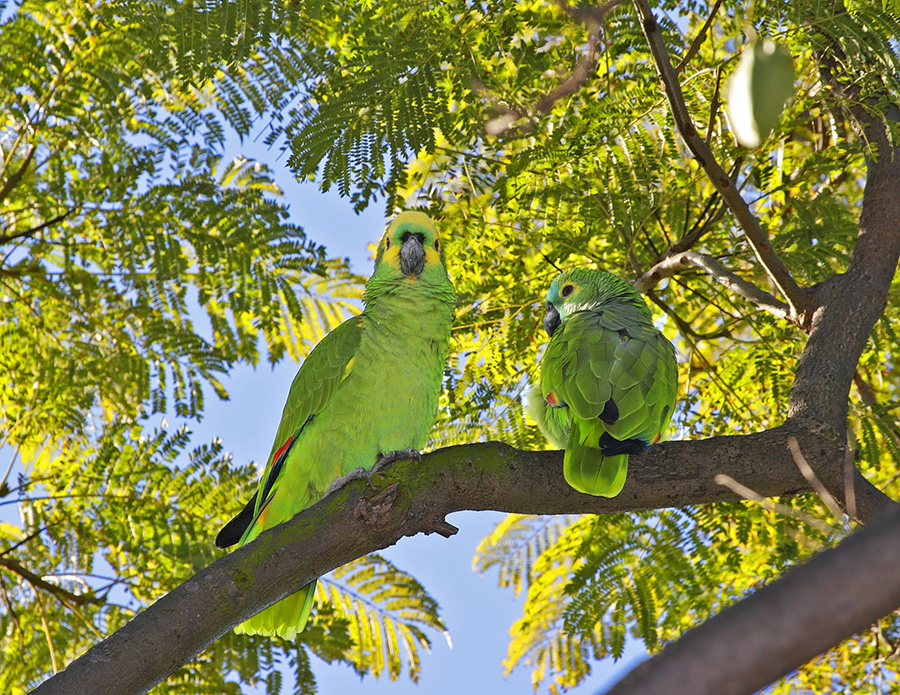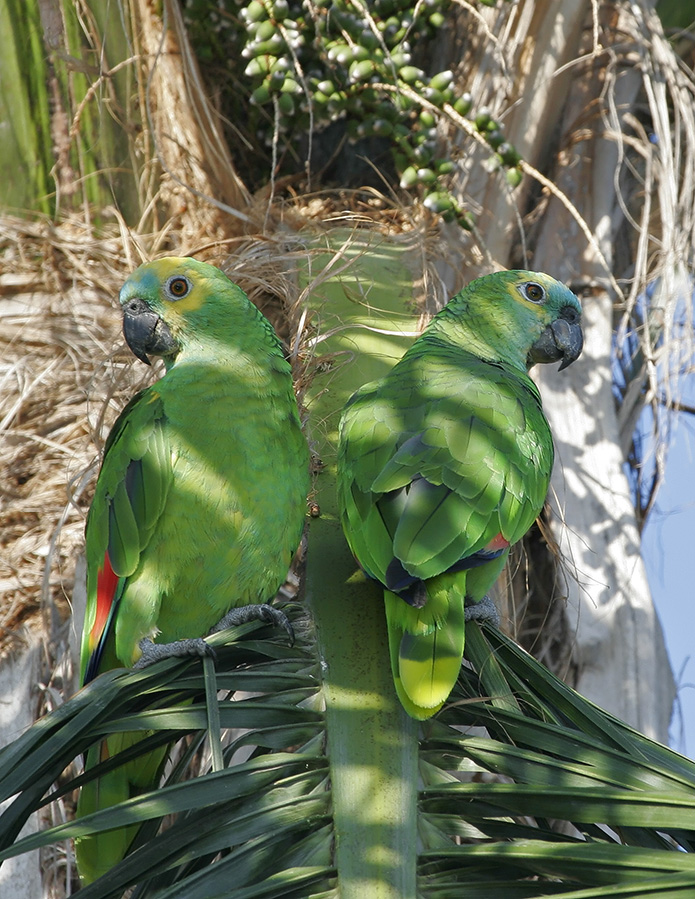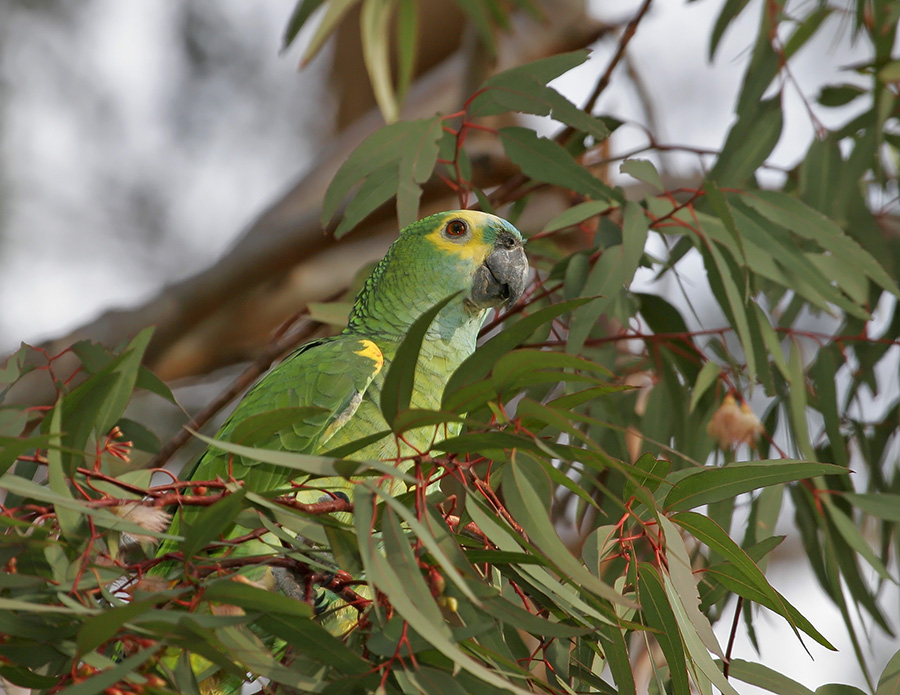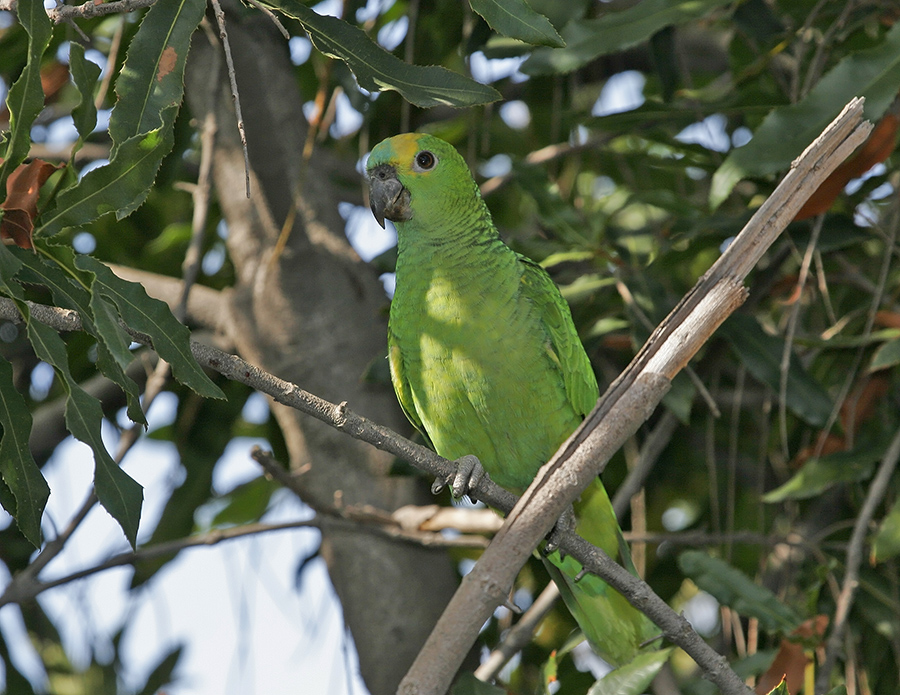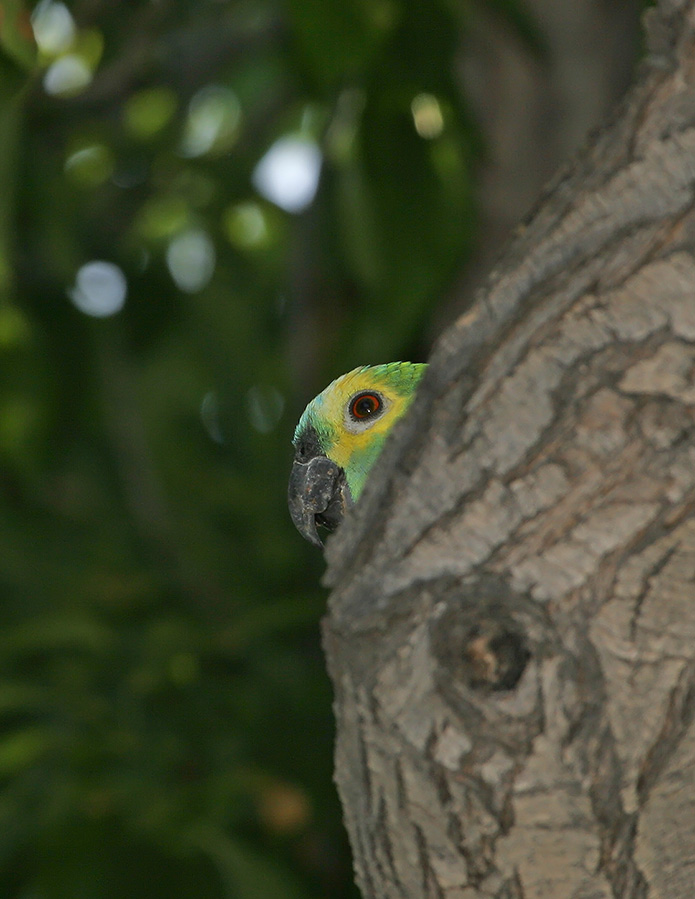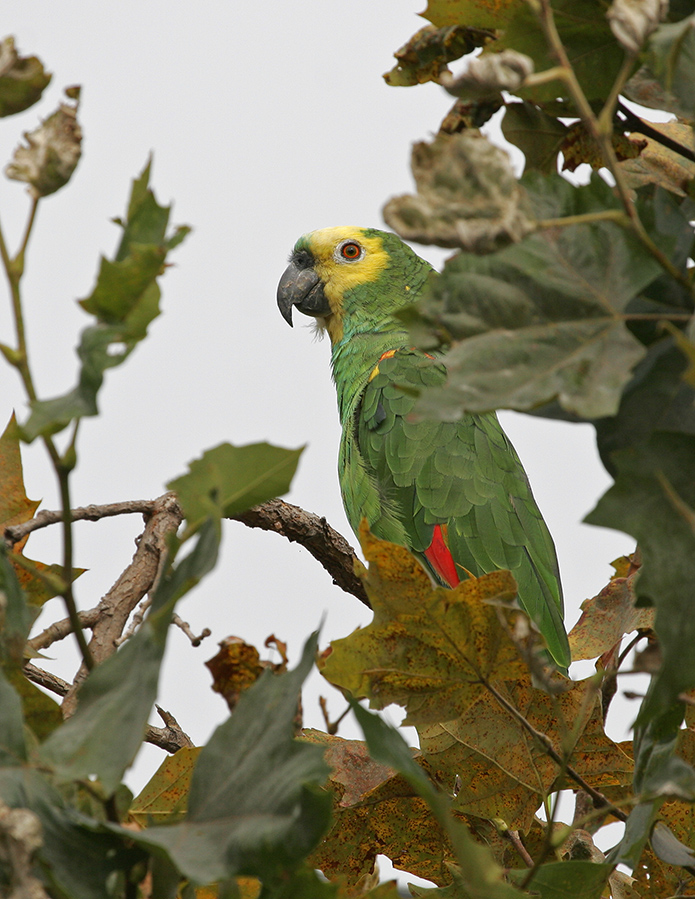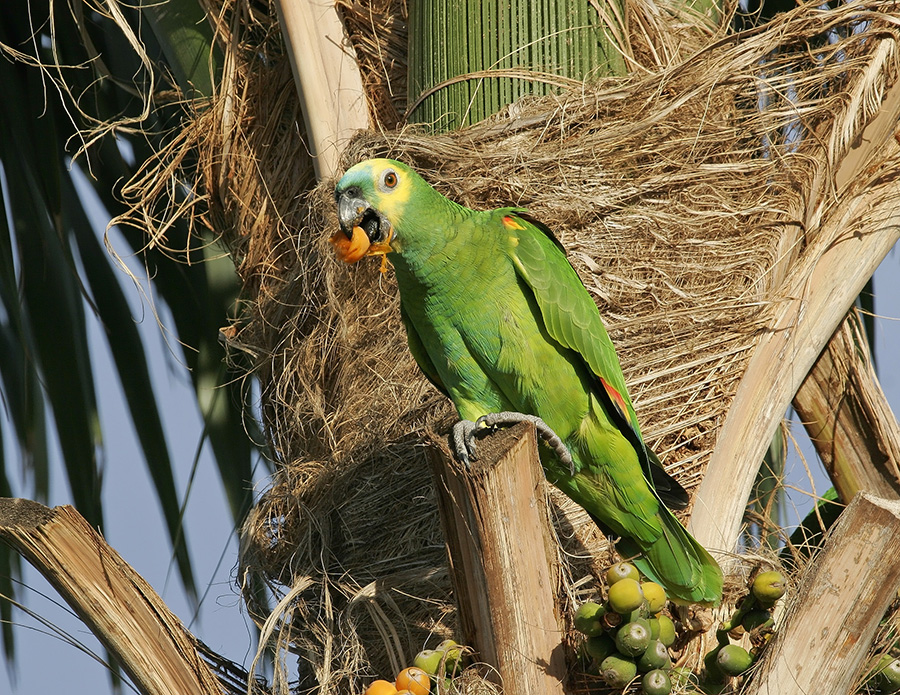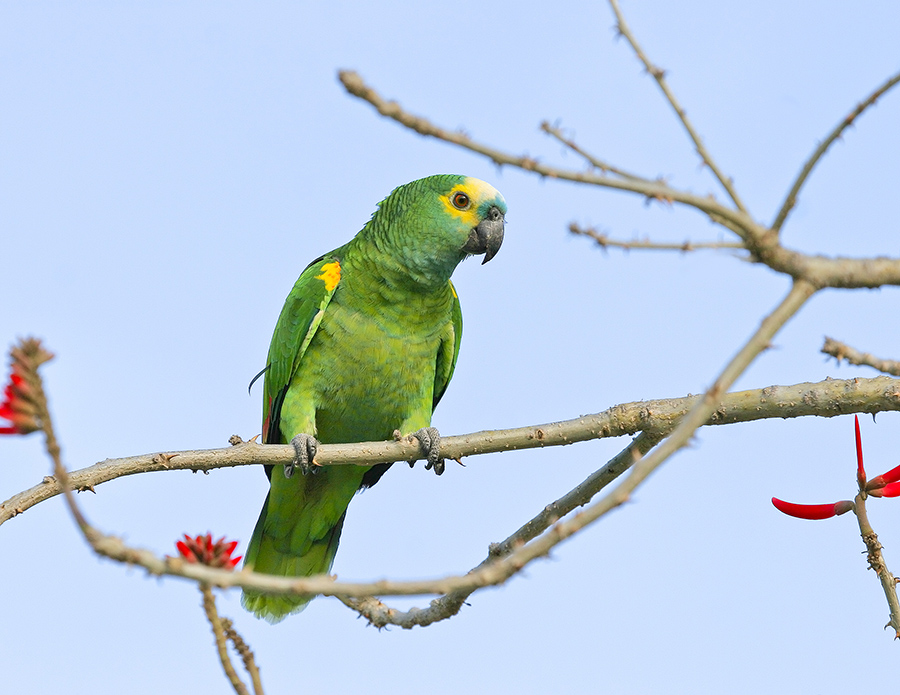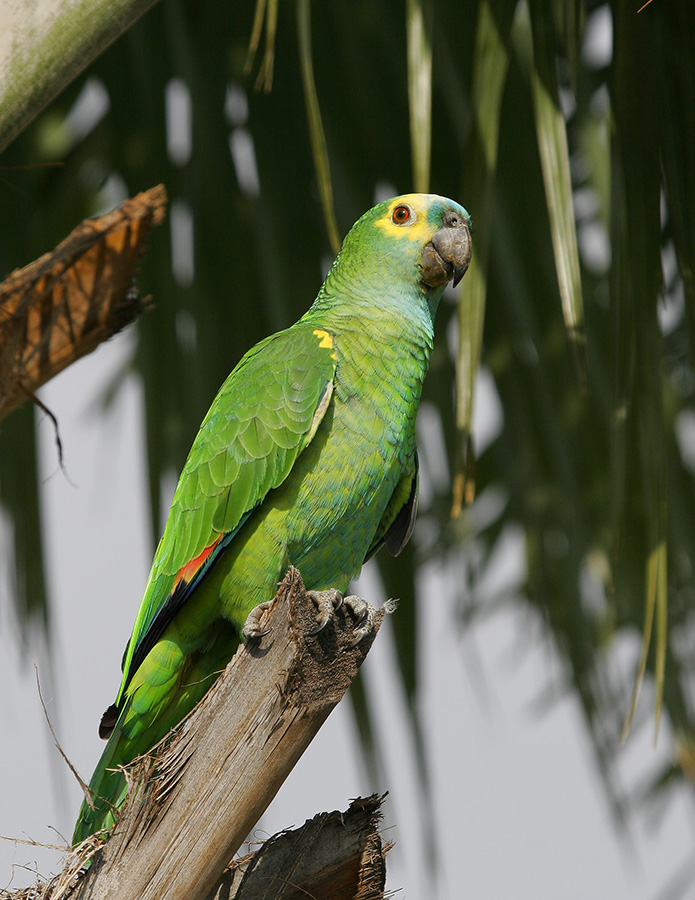Turquoise-fronted Amazon
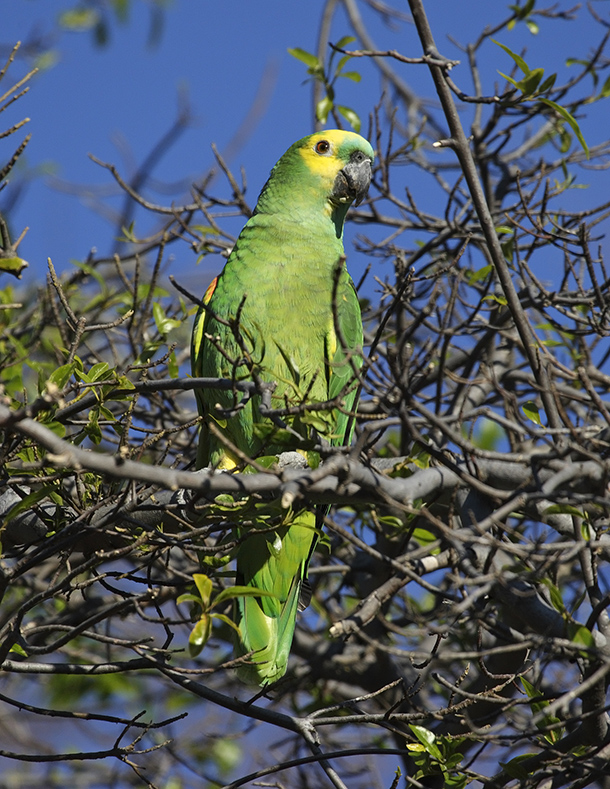
Scientific Name: Amazona aestiva
Species Authority: (Linne, 1758)
Common Names:
Turquoise-fronted Amazon
Blue-fronted Amazon
Turquoise-fronted Parrot
Native to: Argentina, Bolivia, Paraguay
Status: Near Threatened — IUCN
Assessed: August 2019
Population Trend: Decreasing
The Turquoise-fronted Amazon or Turquoise-fronted Parrot, scientifically known as Amazona aestiva, is a vibrant and engaging bird species native to South America. This parrot, easily recognizable by its bright turquoise blue forehead and cheeks, predominantly green body, and yellowish underparts, thrives in a variety of environments across the continent.
Geographic Range and Habitat
The Turquoise-fronted Amazon is found across a wide range of South America, predominantly inhabiting countries like Brazil, Bolivia, Paraguay, and northern Argentina. Its habitat is remarkably diverse, extending across different ecological regions. These parrots are commonly seen in savannas, palm groves, scrubby areas, and deciduous forests. They particularly favor regions near rivers and other water sources.
These parrots have adapted to various environmental conditions, from dry areas to humid forests. However, they are most frequently found in lightly wooded habitats and open country with scattered trees. This adaptability to different habitats has helped them survive in varying climates and environmental changes.
Diet and Foraging Behavior
Turquoise-fronted Amazons have a diverse diet, primarily consisting of fruits, seeds, nuts, berries, and sometimes cultivated crops. They are known to feed on the fruits of both native and introduced tree species, showcasing their adaptability in terms of food sources. In addition, these parrots occasionally consume flowers and insects, which provide essential nutrients.
Their foraging behavior often takes them to different areas in search of food, depending on the season and availability. They are typically seen foraging in flocks, which can range from small groups to larger gatherings, especially in places with abundant food sources. These flocks are often noisy, with the parrots communicating vocally as they move between feeding sites.
Life in the Wild
In the wild, Turquoise-fronted Amazons lead a social and communal life. They are often seen in pairs or small groups and maintain strong social bonds. Their communication involves a range of vocalizations, used both for interacting within the flock and for warning signals.
Conservation Status
Currently, the Turquoise-fronted Amazon is listed as a species of “Least Concern” by the International Union for Conservation of Nature (IUCN), indicating that it is not at immediate risk of extinction. However, habitat loss due to deforestation and the pet trade poses significant threats to their populations in the wild. Conservation efforts are focused on habitat preservation and regulating trade to ensure the species’ long-term survival.
The Turquoise-fronted Amazon is a resilient and adaptable bird, thriving in a variety of South American habitats. Its diverse diet, social nature, and striking appearance make it a notable species among the parrots of the world. Efforts to preserve its natural habitat are crucial for its continued survival in the wild.


